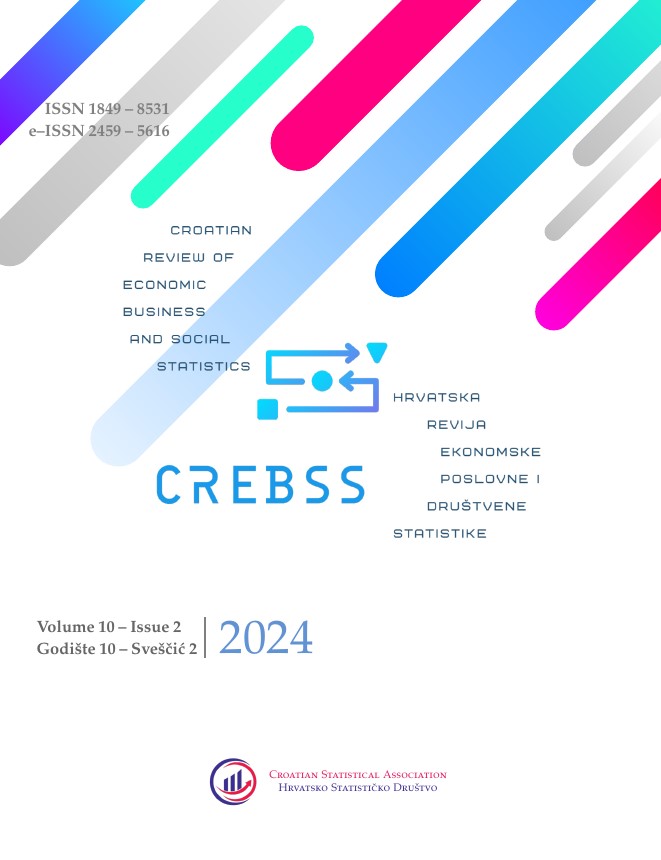The impact of urbanisation on poverty reduction in South Africa: A non-linear ARDL approach
DOI:
https://doi.org/10.62366/crebss.2024.2.002Keywords:
household expenditure, NARDL, poverty reduction, South AfricaAbstract
The asymmetric impact of urbanisation on poverty reduction was examined for South Africa employing data from 1990 to 2022. The study was motivated by the need to establish the effects of positive and negative shocks on poverty reduction. The study used the non-linear autoregressive distributed lag model (NARDL). The study is timely as it is conducted at a time when most countries, including South Africa, are trying to recover from the COVID-19 global pandemic, which led to a surge in poverty levels. The study found that positive and negative shocks of urbanisation are only instrumental in poverty reduction in the short run. In the long run, positive and negative shocks of urbanisation have no significant effect whatsoever on poverty reduction. The study also found that the effects of positive shocks were more dominant than negative shocks on poverty reduction. The findings of the study point to the importance of urbanisation in poverty reduction in the short run. Policy implications are discussed.
Downloads
Published
Issue
Section
License
Copyright (c) 2024 retained by the author(s)

This work is licensed under a Creative Commons Attribution-NonCommercial-NoDerivatives 4.0 International License.

